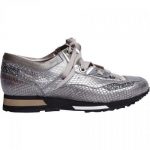Sports and athletic activities have been an integral part of human culture for centuries. From the ancient Greek Olympics to modern-day professional sports, footwear has played a crucial role in performance, comfort, and safety. As various sports have evolved and specialized, so too have the shoes designed for them. This article delves into the intricate world of sports shoes, exploring their evolution, design principles, and the specific roles they play in different sports.
Introduction
The right pair of shoes can make all the difference when it comes to excelling in a particular sport. Sports shoes are not just about fashion or style; they are engineered to provide the necessary support, cushioning, and stability required for each sport. The design, materials, and technologies used in sports shoes vary widely, catering to the specific needs of athletes in different sports.
In this comprehensive article, we will examine the fascinating world of sports shoes, breaking down the distinct shoe styles designed for various sports. We will explore the history of sports footwear, the science behind their design, and the innovations that have shaped the way athletes perform. With a particular focus on popular sports such as basketball, running, soccer, tennis, and more, we will analyze how sports shoes have become an essential tool in the quest for athletic excellence.
The Evolution of Sports Footwear
Historical Roots
The history of sports shoes can be traced back to ancient times. Early sports enthusiasts and athletes often had to rely on simple footwear options, such as sandals or minimalistic leather shoes. In ancient Greece, athletes competed barefoot, which is quite a contrast to the advanced sports shoes of today. The evolution of sports footwear has been a journey marked by innovation and technological advancements.
The Birth of Modern Sports Shoes
The late 19th and early 20th centuries marked a turning point in the development of sports shoes. The invention of the rubber sole and the mass production of athletic footwear paved the way for the sports shoe industry we know today. Brands like Converse, founded in 1908, and Adidas, established in 1949, played pivotal roles in shaping the industry. As athletic events gained popularity, so did the demand for specialized sports footwear.
The Science of Sports Shoe Design
Biomechanics and Foot Anatomy
Understanding the biomechanics of human movement and the anatomy of the foot is fundamental in sports shoe design. Different sports involve distinct motions and stresses on the feet. For example, the repetitive impact in running requires ample cushioning, while the lateral movements in basketball demand strong lateral support. Sports shoe designers collaborate with biomechanical experts to create shoes that mitigate the risk of injury and enhance athletic performance.
Key Design Features
Sports shoes are equipped with a range of design features, each tailored to a specific sport. These include:
- Cushioning: Provides shock absorption to reduce the impact on joints and muscles.
- Traction: Offers grip and stability on various surfaces, from basketball courts to soccer fields.
- Support: Helps maintain foot stability during lateral movements and sudden changes in direction.
- Breathability: Enhances comfort by allowing air circulation and moisture management.
- Weight: Balances the need for support and cushioning with lightweight materials for speed and agility.
- Durability: Ensures the shoe can withstand the rigors of the sport.
Sport-Specific Shoe Styles
Now, let’s delve into the specific shoe styles designed for popular sports and understand their unique characteristics.
Running Shoes
Running is one of the most popular and accessible sports worldwide. Running shoes are designed to provide cushioning, support, and flexibility. They come in various types, including:
- Neutral Running Shoes: Suitable for runners with a natural gait.
- Stability Running Shoes: Designed for those with overpronation, offering extra support.
- Trail Running Shoes: Equipped with durable outsoles for off-road running.
The evolution of running shoe technology has led to innovations like air cushioning, lightweight materials, and moisture-wicking fabrics.
Basketball Shoes
Basketball is known for its fast-paced and high-impact nature. Basketball shoes prioritize ankle support, cushioning, and traction. High-top designs are common to provide added stability, while air or gel cushioning in the soles absorbs shock during jumps and sprints.
Soccer Cleats
Soccer, or football, requires agility, precise ball control, and rapid changes in direction. Soccer cleats feature a unique cleated outsole for traction on grass or turf. The upper part of the shoe is often made of leather or synthetic materials to enhance ball control.
Tennis Shoes
Tennis demands quick lateral movements and changes in direction. Tennis shoes prioritize durability, support, and traction on hard court surfaces. They often have reinforced toe areas to withstand the abrasion caused by the sport.
Golf Shoes
Golf is a sport that involves long walks on uneven terrain. Golf shoes have soft spikes or cleats that provide stability and grip while preventing damage to the greens. They are also designed to be comfortable for extended periods of wear.
Cross-Training Shoes
Cross-training involves a variety of activities like weightlifting, cardio, and agility training. Cross-training shoes are versatile, providing support, cushioning, and traction for a range of exercises.
Technological Advancements
The sports shoe industry is in a constant state of innovation. Advancements in materials and technologies continue to push the boundaries of performance and comfort. Some notable innovations include:
- Nike Air Technology: Introduced in the late 1970s, this technology uses air cushioning to provide lightweight and responsive support.
- Adidas Boost: Incorporating thermoplastic polyurethane capsules, Boost technology offers energy return and comfort in every step.
- Under Armour’s HOVR: HOVR foam technology provides cushioning and energy return for various sports, from running to basketball.
- Puma NetFit: Puma’s NetFit technology allows customizable lacing to achieve the perfect fit and support.
- New Balance Fresh Foam: Fresh Foam offers soft and responsive cushioning for running shoes.
The Impact of Athlete Endorsements
Athlete endorsements have played a significant role in shaping the sports shoe industry. Famous athletes often collaborate with footwear brands to design and promote signature shoe lines. Michael Jordan’s partnership with Nike for the Air Jordan series is a prime example of how athlete endorsements can elevate a brand and influence consumer preferences.
The Future of Sports Shoes
As technology and materials continue to advance, the future of sports shoes holds exciting possibilities. 3D printing is already being used to create custom-fit athletic footwear, and sustainable materials are becoming more prevalent in sports shoe production. The emphasis on reducing environmental impact and improving performance will continue to drive innovation in the industry.
Conclusion
Sports shoes are not mere accessories but essential tools for athletes to excel in their respective sports. The intricate world of sports footwear encompasses a rich history, biomechanical science, and innovative design principles. As we’ve explored in this article, the diverse styles of sports shoes cater to the specific needs of athletes in various sports, offering them the support, comfort, and performance-enhancing features required to reach their full potential. With ongoing technological advancements and a growing emphasis on sustainability, the future of sports shoes is poised for even greater evolution, benefiting athletes and sports enthusiasts worldwide.
















Add Comment